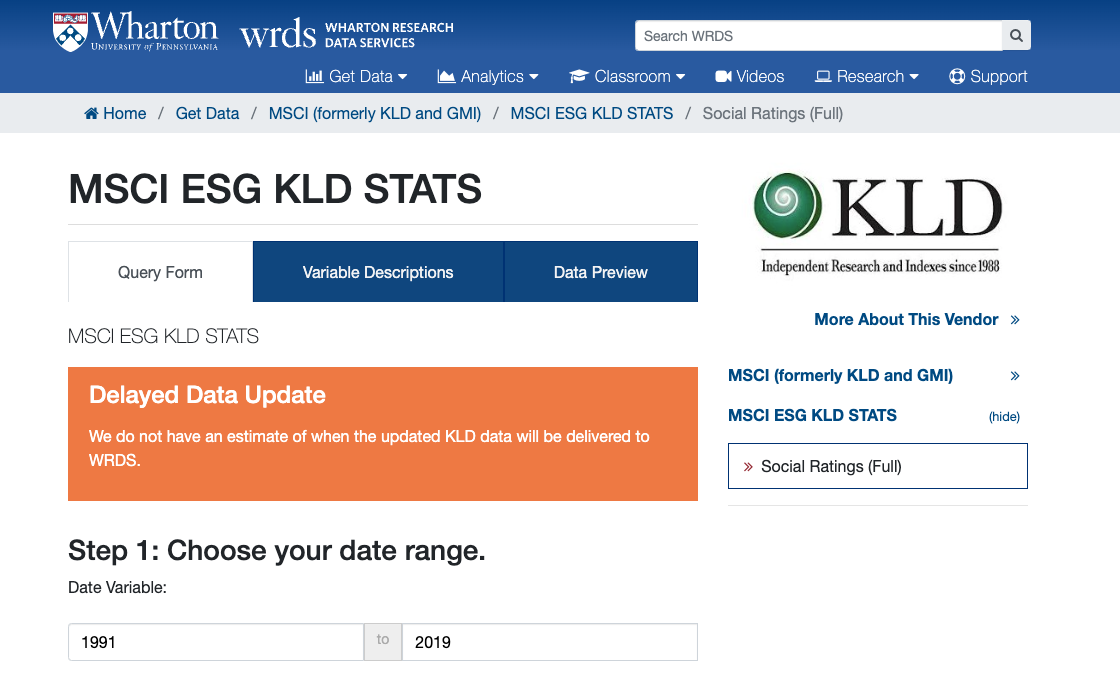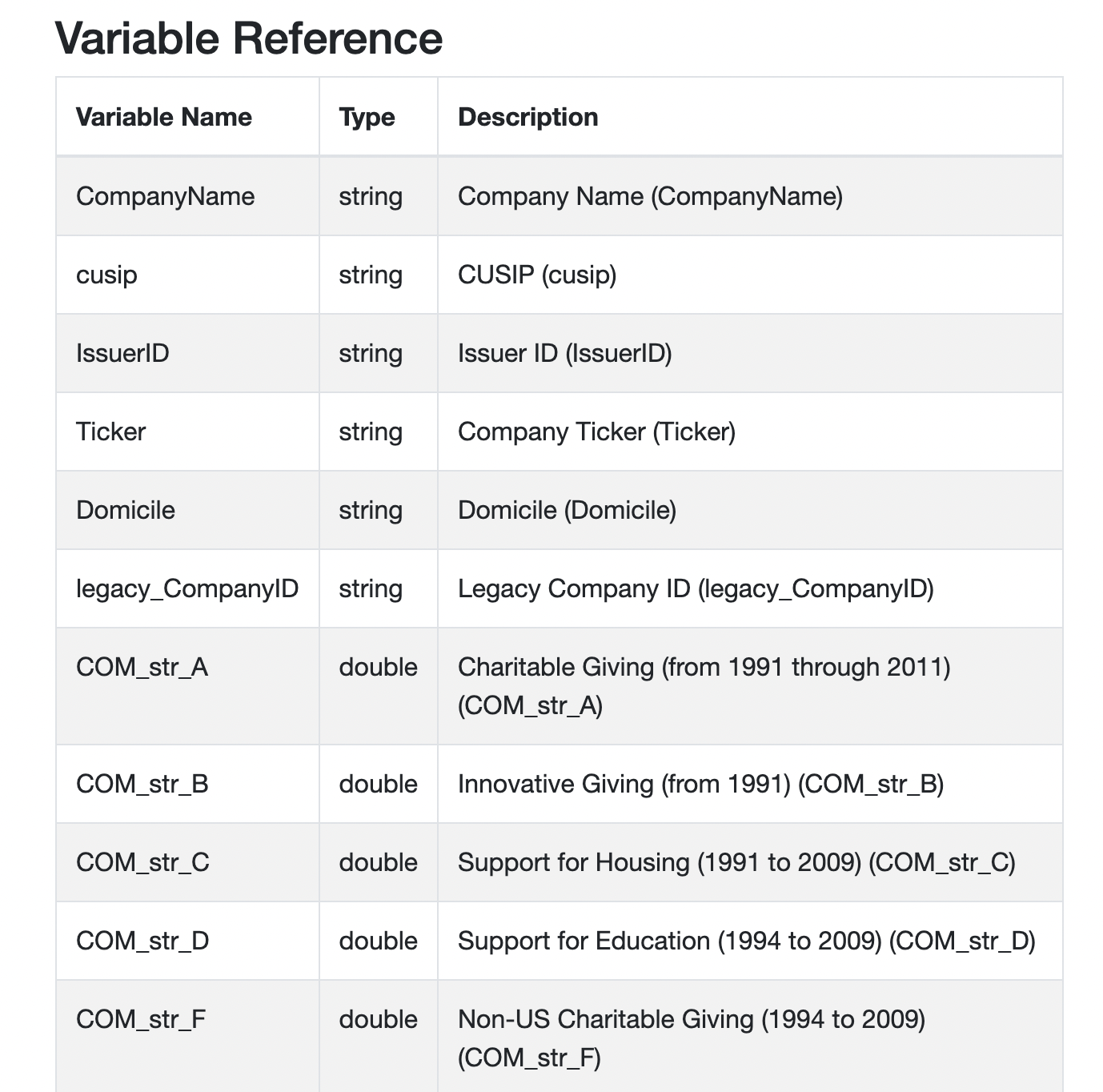ESG Ratings: KLD data
Published:
In this post, I will introduce the ESG ratings provided by KLD (Kinder, Lydenberg, and Domini).
KLD is one of the earliest data vendor to provide information on companies’ ESG performance. Different from most of the other ratings, KLD does not provide an aggregate ESG score for each firm, nor separate scores on environmental, social, and governance aspect respectively. Instead, it classifies ESG performance into 13 different categories.
- 7 major categories: environment (ENV), community (COM), diversity (DIV), employee relations (EMP), human rights (HUM), product (PRO), corporate governance (CGOV)
- 6 minor categories: alcohol (ALC), gambling (GAM), firearms (FIR), military (MIL), nuclear (NUC), tobacco (TOB)
For the 7 major categories, KLD provides binary indicators of strengths and concerns. Namely, a firm is given 1 for strengths (or concerns) if it commits good (or bad) deed in that area. For the 6 minor categories, KLD only scores concerns and the measures are mainly industry-level (whether firms’ operations are related to these controversial industry).
Keeping this in mind, we need to compute the aggregate score by ourselves. Most of the existing studies use the following procedures.
- Compute the strength (concern) index per category by $No.\ of\ strengths\ (concerns)\ in\ that\ firm-year/Maximum\ strengths\ (concerns)$ This scaling makes the indices comparable across years and categories, as the number of strengths or concerns varies.
- Compute the net index per category by $Strength\ index - Concern\ index$, which ranges from -1 to 1.
- Compute the total index by the summing up the net indices of selected categories. Note that this summation weights each category equally.
Most papers construct the ESG index from the 7 major categories, though they could include only some of them according to their need. For instance, Lins et al. (2017) does not include product and corporate governance, as they consider them to be outside the scope of CSR. Chen et al. (2020) exclude human rights and corporate governance, as most of the measures in human rights are lack of variations and corporate governance are already studies in other papers. Both of them mentioned that their results remain unchanged if all 7 categories are included. If you want separate scores for E, S, and G, you could use environment (ENV) for E, corporate governance (CGOV) for G, and the remaining 5 major categories for S.
KLD was brought by MSCI in 2010. You could find “MSCI ESG KLD STATS” on WRDS. At the time of writing, there is a delayed data update that you can only get the data from 1991 to 2019.

After downloading the data, you could identify the category of each indicator from their name. For instance, “COM_str_A” is a strength under community category, “DIV_con_C” is a concern under diversity category. For those variables with a suffix “_num”, they measures the number of strengths (or concerns) which equal 1 of a given category at firm-year level.

Try to play with the data and contruct the ESG scores by yourself!
If you are interested in ESG issues, feel free to check out my other posts on that.
Reference
- Chen, Tao, Hui Dong, and Chen Lin, 2020, Institutional shareholders and corporate social responsibility. Journal of Financial Economics 135, 483–504.
- Lins Karl V., Henri Servaes, and Ane Tamayo, 2017, Social Capital, Trust, and Firm Performance: The Value of Corporate Social Responsibility during the Financial Crisis. The Journal of Finance 72, 1785–1824.
